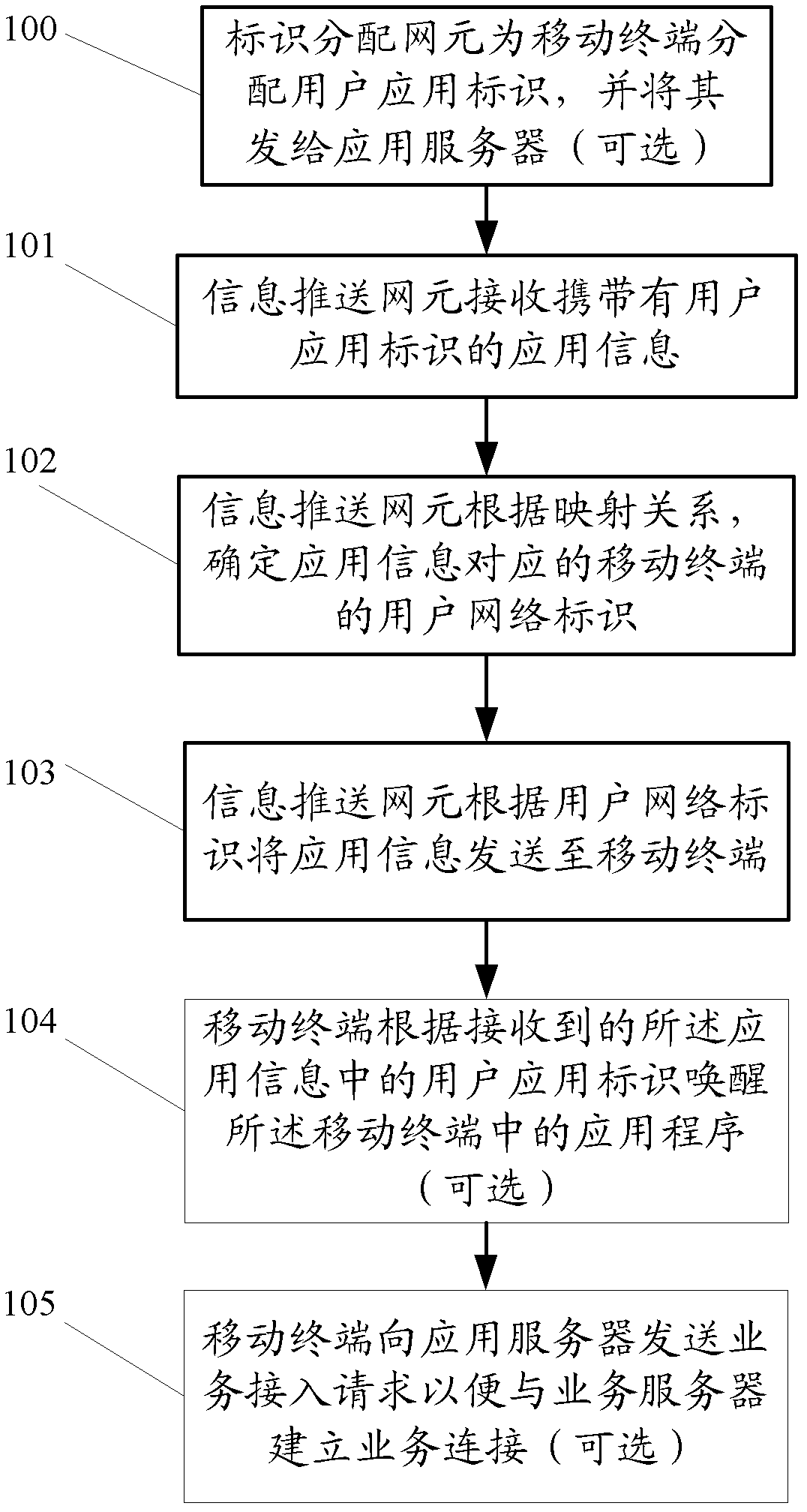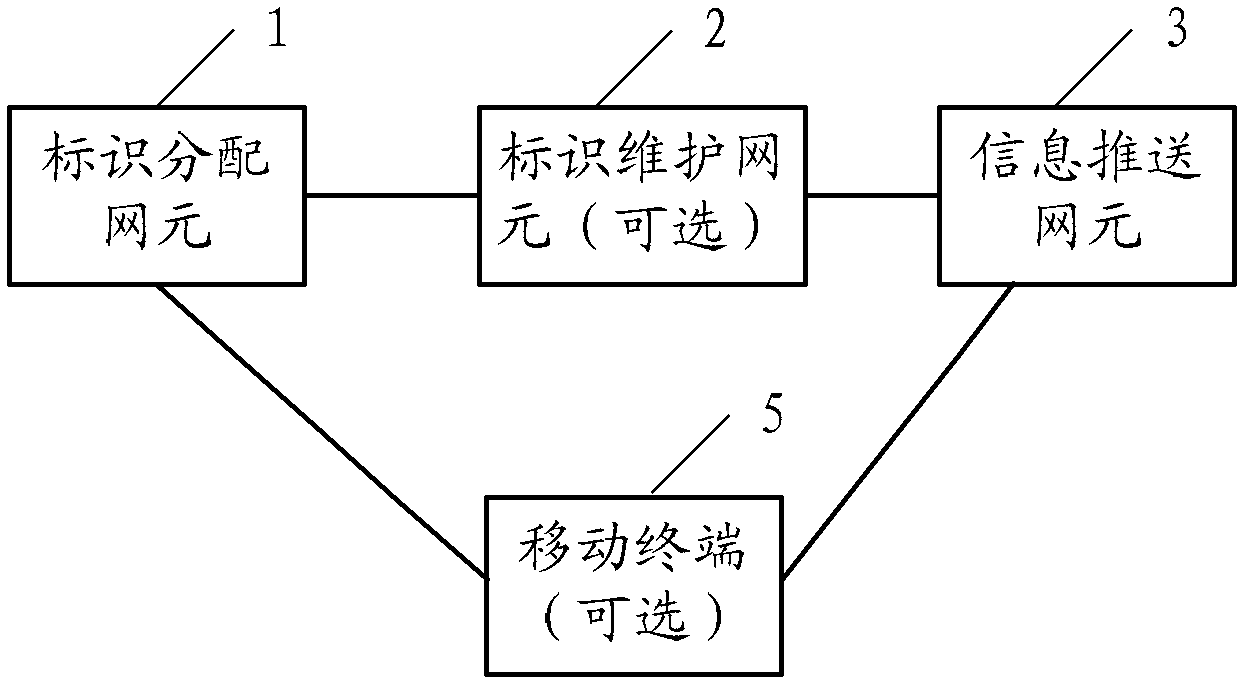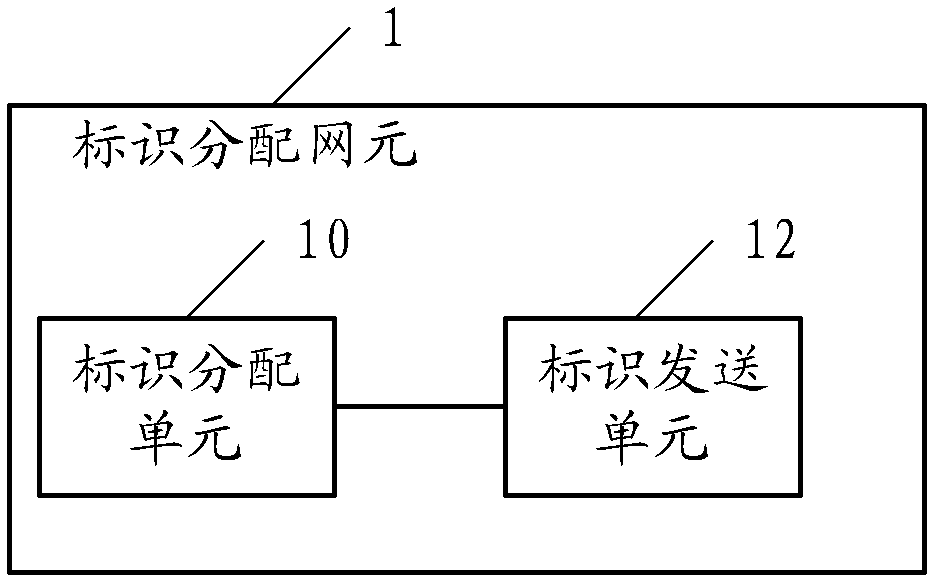Application information push method, system and network element
A technology of application information and information push, applied in the direction of transmission system, information format, electrical components, etc., can solve the problems of shortening the standby time of mobile phones, consuming wireless packet network transmission resources, etc., and achieve the effect of ensuring security and two-way information interaction
- Summary
- Abstract
- Description
- Claims
- Application Information
AI Technical Summary
Problems solved by technology
Method used
Image
Examples
Embodiment 1
[0093] In this embodiment, the mobile terminal obtains the O-TMSI / O-TMSN through signaling interaction during the location update process; the mobile terminal provides the O-TMSI and O-IMSN to the application server through the application program interface.
[0094] That is, when the mobile terminal enters a new location area of the mobile network, it initiates a location update request to the MSC / VLR in the mobile network (in this example, the MSC / VLR has the function of identifying the allocation network element). After the MSC / VLR confirms the user's identity, the MSC / VLR generates the corresponding O-TMSI and O-TMSN for the user, and sends it to the mobile terminal in the location update response message for the mobile terminal to use when accessing the mobile Internet. At the same time, the location update message also carries a replacement indication, which is used to indicate whether to replace the existing O-TMSI and O-TMSN of the mobile terminal.
[0095] The mappi...
Embodiment 2
[0097] In this embodiment, the user application identifier is specifically O-TMSI or O-IMSN. In this embodiment, after obtaining the IP address, the mobile terminal obtains the O-TMSI / O-TMSN through the signaling interaction carried by the mobile packet; the mobile terminal provides the O-TMSI and O-IMSN to the application server through the application program interface .
[0098]The service paging gateway (in this example, the service paging gateway has the function of identifying and assigning network elements, and stores the mapping relationship between O-TMSI / O-TMSN and IMSI / MSISDN) is responsible for generating corresponding O-TMSI / MSISDN for IMSI / MSISDN O-TMSN. When the service application installed on the mobile terminal needs to obtain O-TMSI / O-TMSN, it sends an application to the service paging gateway of the mobile network through the user plane bearer channel established by the mobile packet network. According to the IP address of the mobile terminal in the recei...
Embodiment 3
[0100] The Internet in this embodiment is a WiMAX network, and the user application identifier is specifically an APP UID corresponding to the NAI. In this embodiment, after the application server obtains the NAI, it directly obtains the APP UID from the identifier allocation network element.
[0101] The PCRF in the WiMAX network (in this example, the PCRF has the function of identifying and assigning network elements, and stores the mapping relationship between O-TMSI / O-TMSN and IMSI / MSISDN) is responsible for generating the corresponding APP UID for the user NAI. The application server obtains the user NAI identifier from the mobile terminal through an application layer protocol, such as HTTP, SIP and other messages.
[0102] The application server sends an APP UID request message to the PCRF of the WiMAX network, and the message carries the NAI identifier of the user. After receiving the request message, the PCRF allocates a corresponding APP UID to the application of the...
PUM
 Login to View More
Login to View More Abstract
Description
Claims
Application Information
 Login to View More
Login to View More - R&D
- Intellectual Property
- Life Sciences
- Materials
- Tech Scout
- Unparalleled Data Quality
- Higher Quality Content
- 60% Fewer Hallucinations
Browse by: Latest US Patents, China's latest patents, Technical Efficacy Thesaurus, Application Domain, Technology Topic, Popular Technical Reports.
© 2025 PatSnap. All rights reserved.Legal|Privacy policy|Modern Slavery Act Transparency Statement|Sitemap|About US| Contact US: help@patsnap.com



